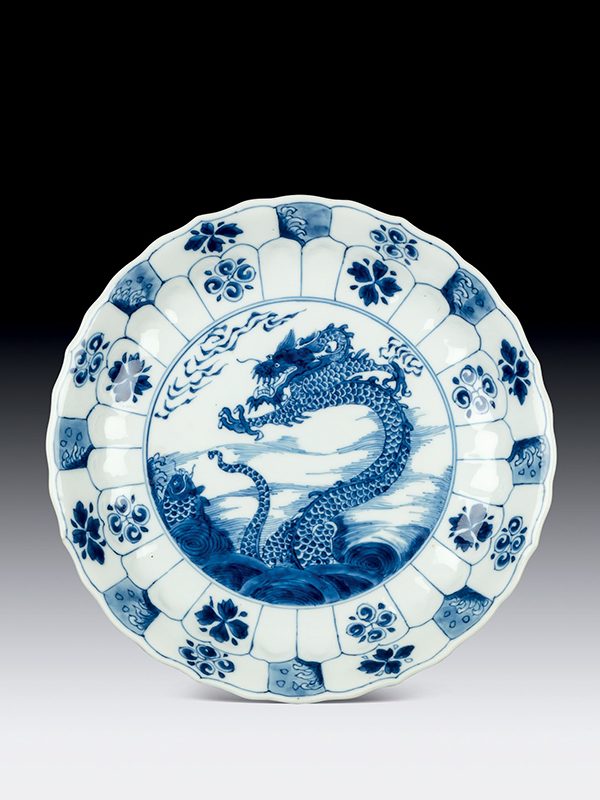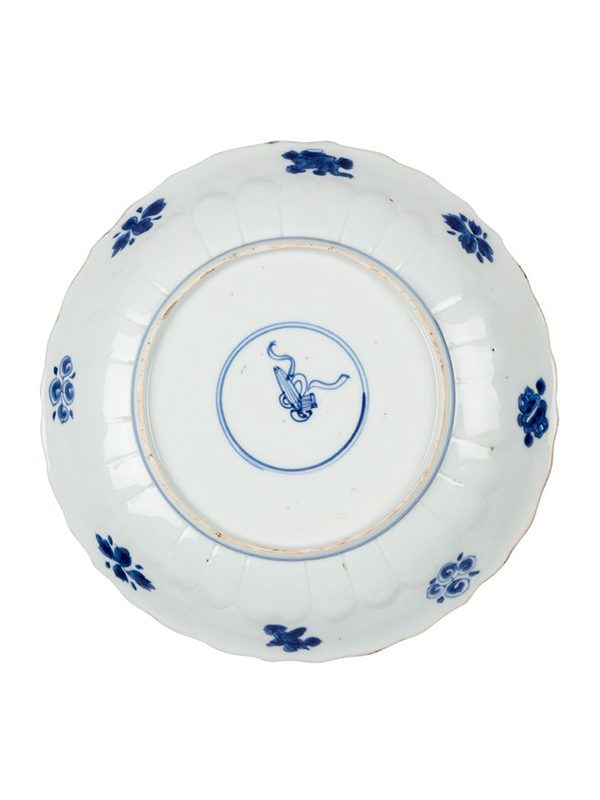Porcelain dish with a dragon
China, Kangxi period, 1662 - 1723
A porcelain dish of circular form, the rim upturned. The inside centre is painted in strong cobalt blue with a vigorous four-clawed dragon, contained within a double circle and confronting a carp that leaps from the waves beneath him. The horned animal is depicted with mouth wide open, bearing its teeth and has a scaly body. The broad rim is moulded with a chrysanthemum pattern on the outside and is painted with scattered flower heads and waves. The flower head pattern is repeated on the outside rim. The centre back is painted with a beribboned precious object, contained within a double circle.
The pattern of dragons on blue and white dishes dates back to the Ming dynasty; see for instance a number of examples in the collection of the Asian Art Museum of San Francisco.1 A late 17th century bowl with a striding, bifid dragon is in the Meiyintang collection.2 The same collection also has a Yongzheng (1723 – 1735) mark and period dish, painted with a confronting, winged dragon.3 A very similar, slightly larger blue and white four-clawed dragon dish from the collection of Samuel Putnam Avery Sr. (1822 – 1904), housed in the Metropolitan Museum of Art in New York, was accessioned in 1879, was deaccessioned in 2016.4 A very similar dragon in coloured enamels can be seen on the inside of a porcelain bowl with a Qianlong mark that was exhibited in Hamburg in 2000.5 A carp (Liyu) transforming into a dragon (long) signifies the wish “May you pass the civil service examination and become a high official”.6
- Li, He Chinese Ceramics, the New standard Guide, Asian Art Museum of San Francisco, 1996, nos. 418 – 421, p. 224
- Krahl, R. Chinese Ceramics from the Meiyintang Collection, Volume Two, Azimuth Editions, London 1994, no. 760, p. 130
- Krahl, R, op. cit. No 761, p. 130
- https://www.christies.com/lotfinder/ Lot/a-molded-blue-and-white-dish-kangxi.6017629-details.aspx
- Peitninger, F X, Drachenkralle und Rattenschwanz. Das Tier in der ostasiatische Kunst, Hamburg 2000, pl. 32, p. 41
- Tse Bartholomew, T. Hidden Meanings in Chinese Art, Asian Art Museum, San Francisco, 2006, 4.11.1. p. 92


